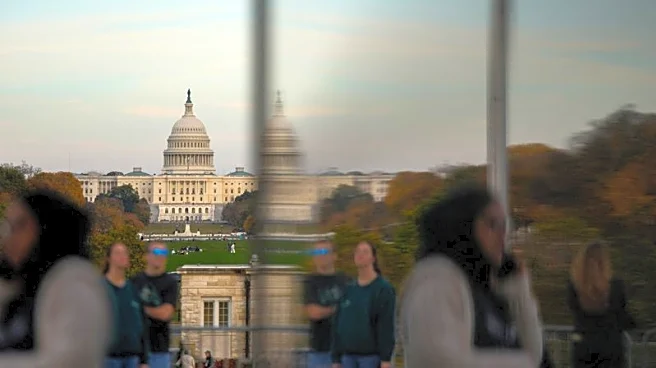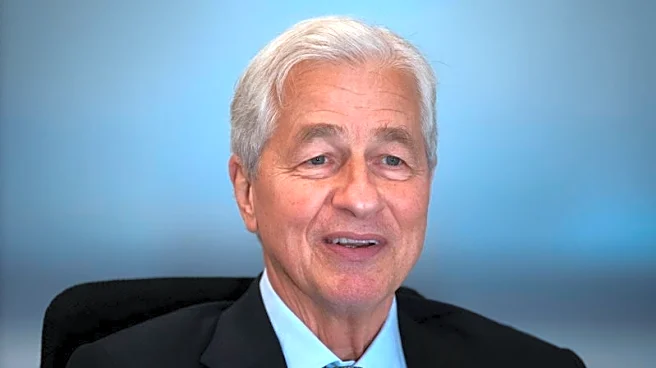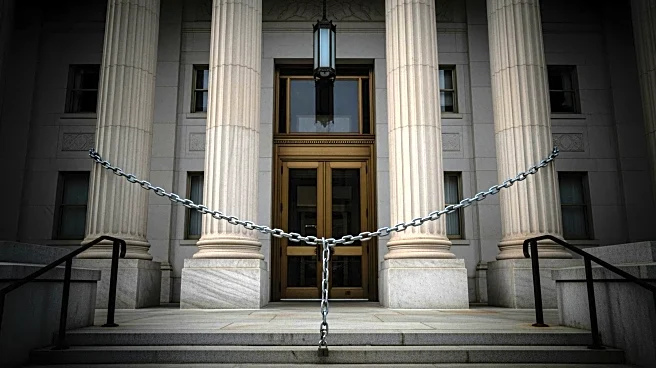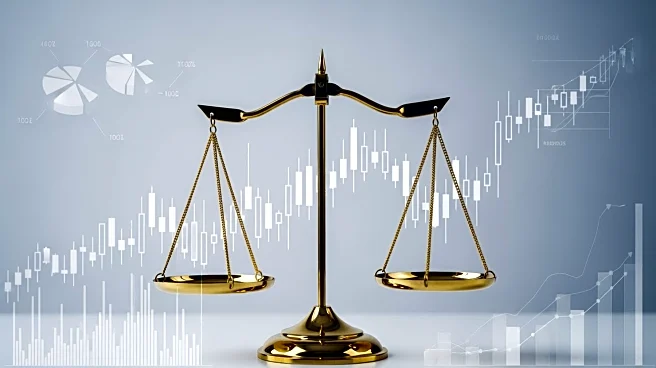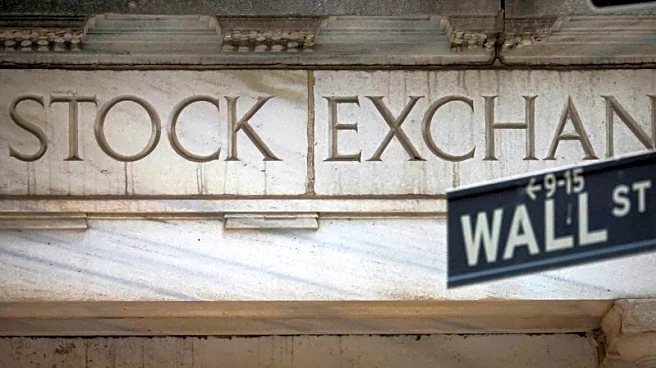What's Happening?
The current U.S. government shutdown, which began on October 1, has become the longest in American history, surpassing previous records and causing significant economic damage. The shutdown has resulted
in millions of Americans not receiving food stamp benefits and approximately 1.4 million federal employees going unpaid, despite many continuing to work. The release of government economic data has stalled, leaving investors and policymakers without crucial information. According to Goldman Sachs, the shutdown is expected to slow down the growth of the real gross domestic product (GDP) by 1.15 percentage points during the fourth quarter. The Congressional Budget Office (CBO) estimates a reduction in GDP by one to two percentage points, with a permanent loss of $7 billion to $14 billion. The shutdown's impact is exacerbated by its timing, coinciding with other economic challenges such as high tariffs and the resumption of student debt payments.
Why It's Important?
The prolonged government shutdown poses significant risks to the U.S. economy, potentially leading to a slowdown in economic growth and increased financial instability. The lack of government data hampers the ability of policymakers and investors to make informed decisions, which could lead to cautious economic strategies and delayed policy responses. The shutdown affects a wide range of stakeholders, including federal employees, businesses reliant on government contracts, and individuals dependent on government assistance programs. The uncertainty surrounding the repayment of furloughed workers further complicates the economic outlook, potentially leading to long-term financial strain for affected individuals and families. The situation highlights the broader implications of political gridlock on economic stability and public welfare.
What's Next?
If the government shutdown continues, the economic impact is expected to intensify, with further reductions in GDP and potential disruptions in financial markets. The Federal Reserve may be forced to make interest rate decisions with limited data, potentially affecting monetary policy. Once the government reopens, a rebound in economic activity is anticipated, with Goldman Sachs predicting a boost in GDP growth in the first quarter of 2026. However, this recovery is contingent on the repayment of furloughed workers, a policy currently under question by President Trump. The resolution of the shutdown and the subsequent economic recovery will depend on political negotiations and the ability of lawmakers to reach a consensus.




